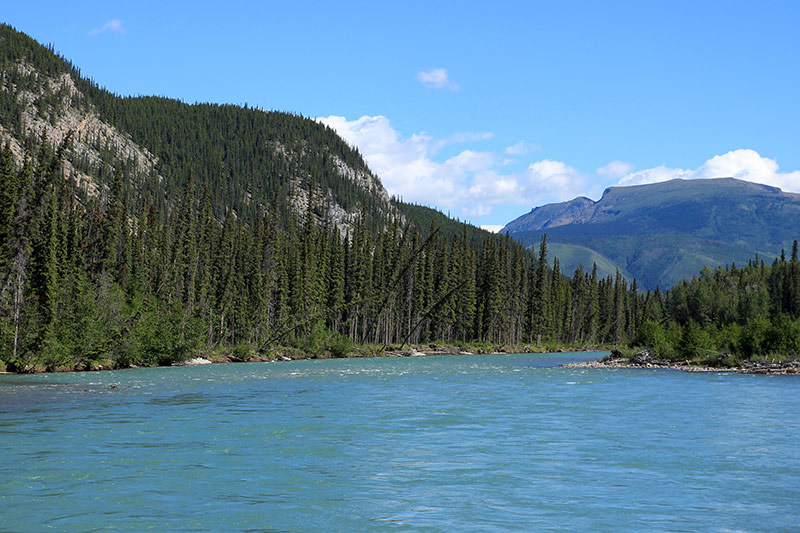If you’re looking for an escape from society and everyday life, you will find sanction at Atlin/Téix’gi Aan Tlein Provincial Park, which surrounds the southern third of Atlin Lake, the largest natural lake in British Columbia, even though part of it is in Yukon.
Approximately one third of Atlin Park is occupied by glaciers, with Llewellyn Glacier being the most prominent. The area has been used by the Taku River Tlinget for many years, and several archeological and cultural sites are located within the park.
The remoteness of the 301,140-hectare park, combined with the varied topography, offers exceptional outdoor adventure. Those that travel in this undeveloped and wilderness park should be experienced and well equipped. There are no supplies of any sort in the park, and no park personnel in the immediate area. Toilet facilities are provided at every camping location noted on the park map.
If you’re planning on hiking this region, it is strongly recommended that you have a guide, as trails are not marked. There are two maintained trails in the park. One trail begins at the head of Llewellyn Inlet which leads to a hiking route taking you to Llewellyn Glacier. The second trail is located at Sloko Inlet; this two kilometer trail leads to Sloko Lake. Wilderness camping is permitted.
Snowmobiling is allowed on Atlin Lake only within the park. Beyond Atlin Lake, snowmobile use is prohibited. Atlin Lake contains lake trout, arctic grayling, Dolly Varden and two different species of whitefish. There are also dozens of smaller lakes in the Atlin region.
There are paddling adventures to be had on Atlin Lake. The massive lake is subject to sudden, strong gusts of winds, so be careful not to paddle more than 30 metres offshore during adverse conditions. After all, the name Atlin is a corruption of “Ah-lah”, a native word meaning stormy weather. Although there are no developed facilities, there are many sheltered locations to beach a canoe or pitch a tent.
Getting off the beaten path is a must for explorers; many areas can be reached only by foot, horseback, helicopter, or floatplane. Those seeking solitude can go for days or weeks in some areas without sharing this rugged beauty with anyone else. The most common modes of transportation into Atlin Provincial Park are boat and floatplane. Charters are available from Jakes Corner on the Alaska Highway.
The climate patterns of the area are continental, with cold, long winters and warm summers. Stormy weather can linger in the valley for long periods. Temperatures decrease with increasing elevation. Because of latitude, Atlin Park has very short days in the winter, but by the June solstice there is no actual darkness at night.
The area provides exceptional habitat for grizzly bear, black bear, mountain goat, caribou, moose, stone sheep, and various wolf populations. There are many small animals such as the hoary marmot, Arctic ground squirrel, picas, beavers, and otters. Birds include various gulls, the Arctic tern, blue grouse and ruffed grouse, and rock, willow and white-tailed ptarmigans that have been spotted near the upland.
Atlin/Téix’gi Aan Tlein Provincial Park is located in the extreme northwest corner of British Columbia, up against the border with Alaska. Highway 7, which connects BC with Alaska, makes its way south from Jakes Corner in the Yukon to the community of Atlin in BC, providing access to Atlin/Téix’gi Aan Tlein Provincial Park.
Nearby Regions & Towns
Park Notices


